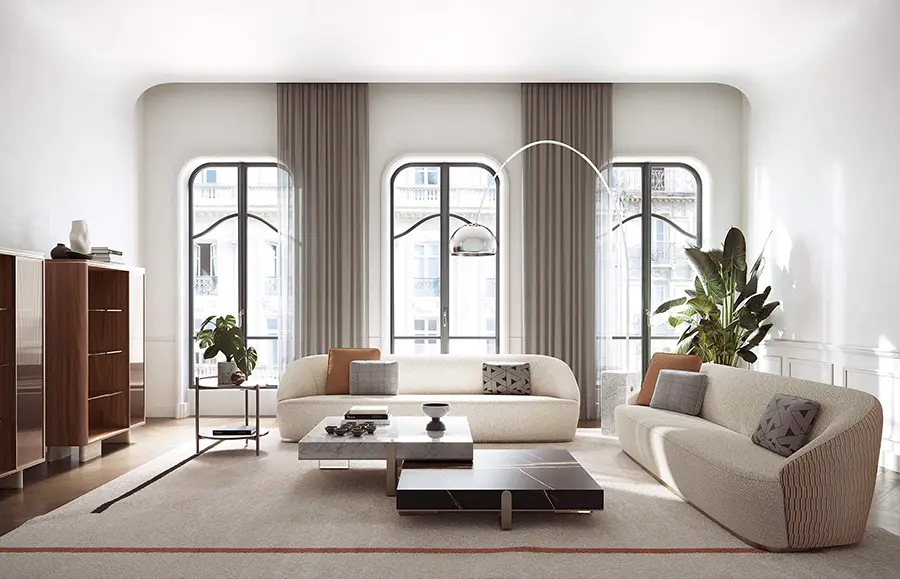
Difference #01: Customization
Luxury furniture offers plenty of opportunities for customization. Customers can choose from various designs for their interior design furniture—and can often customize the dimensions of their pieces, too (including length, width, depth and height). They can also choose from different materials for their pieces. Some options to choose from include:
- Exotic woods, such as mahagony, teak, walnut, oak and rosewood.
- High-quality metals like stainless steel, bronze, and brass.
- Tempered and frosted glass
- Full-grain, top-grain and nabuk leather
- Genuine marble, porcelain, quarts surfaces with unique veining.
- High-quality and durable plastic
- Natural stone, like granite and onyx
- High-end upholstery fabrics, such as silk, velvet, linen and cashmere.
The reason for this hustle for customization? The desire to offer clients a one-of-a-kind piece that reflects their individuality and merges well with their taste of home collection.
On the other hand, regular furniture is mass-produced—this means it lacks a unique (and personalized) touch. It also comes in standard sizes with very few opportunities for customization. Moreover, regular furniture is made of lesser-grade materials, such as painted MDF and laminates.
When you visit the market, spot the difference between regular and luxury furniture by inquiring about the extent of customization offered. Luxury brands pride themselves on offering plenty of choices in terms of dimensions, materials, and finishes. Likewise, they will provide extensive catalogs that showcase their available customizations. If the brand offers limited customization—and more straightforward catalogs—they perhaps sell regular furniture.
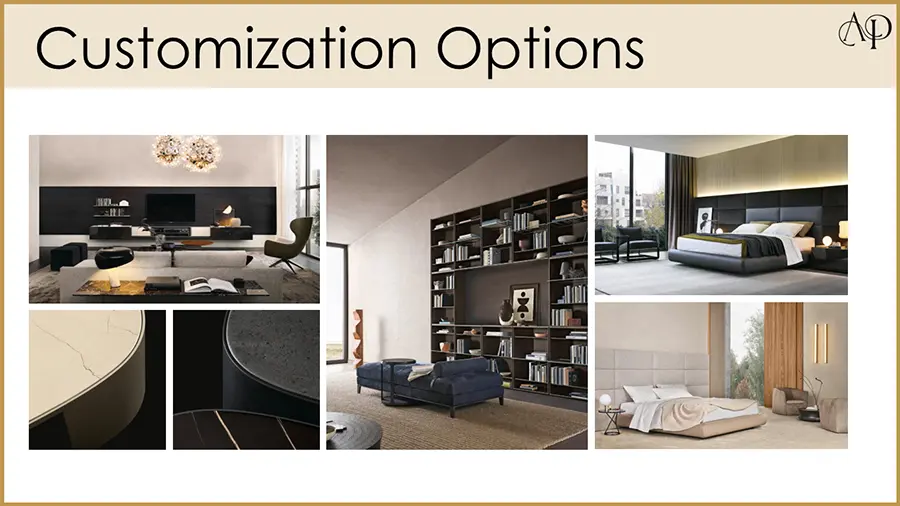
Difference #02: Comfort
Luxury furniture places a premium on comfort, so the pieces offer maximum support as well as relaxation. They are designed after thoroughly studying ergonomics and human interaction with furniture—so optimal comfort can be provided. This includes high-end seating that is anatomically engineered to support the body’s natural contours. Cutting-edge materials are used (such as memory foam or high-resilience padding), ensuring the seats dynamically adapt to one’s posture.
Some luxury furniture pieces also offer unique reclining options, so you can adjust your seat as you like. For example, a reclining headrest or an adjustable lumbar. Luxury seating might also feature innovative materials like phase-changing fabrics that adjust to body temperature, ensuring optimal comfort in any climate.
Regular furniture, on the other hand, is created with cost-effectiveness in mind. This means it focuses on simple furniture design that is easy to create (instead of ergonomic considerations). You can expect standard padding and support without advanced technologies.
In the marketplace, you can tell the difference between luxury and regular furniture by examining ergonomics and craftsmanship: inconspicuous seams and smooth connections will be found. You will also find cutting-edge design elements, such as hidden compartments and reclining mechanisms. Regular furniture will not have such features—and there will be signs of mass production, such as visible seams.
Additionally, the comfort in luxury furniture isn’t just limited to your purchased pieces. When you visit a luxury showroom, you will be treated with special treatment and attention. The dedicated consultants will guide you throughout the process and provide personalized service. In contrast, a regular furniture store will provide an experience similar to the regular shops you visit.
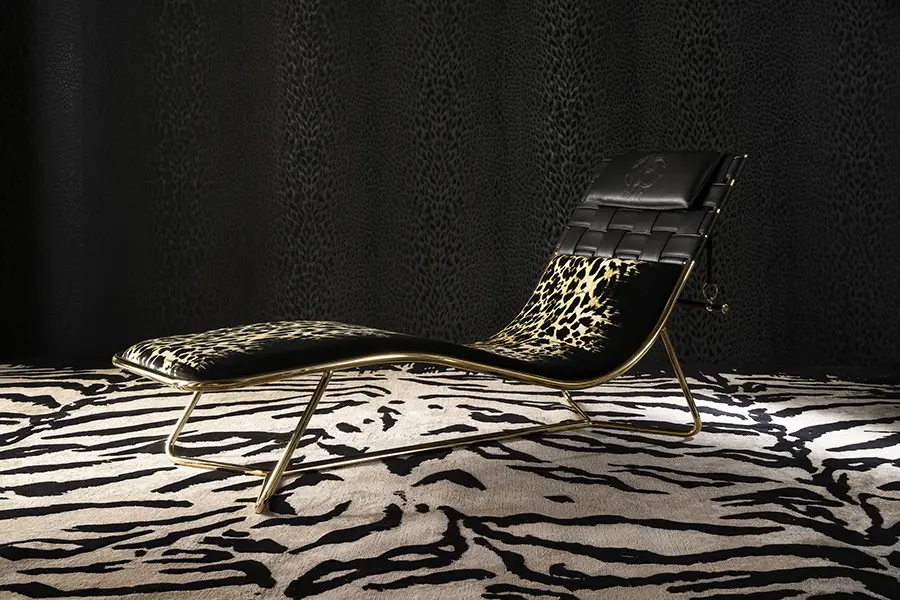
Difference #03: Innovation
The genesis of luxury furniture lies in collaborations with world-class visionaries—designers who transcend the boundaries of conventional thinking. These collaborations result in pieces that are not just furniture but expressions of art pushing design boundaries. Their finishes are not just colors but unique textures—handcrafted patinas, distressed finishes, or even bespoke patterns. You can also have your initials subtly engraved into a piece!
They also continuously evolve with the industry; the designs are not confined to a moment but are part of an ongoing narrative that shapes the industry’s future. Whether it’s groundbreaking shapes, avant-garde elements, or pioneering functionalities, luxury designs make a statement by challenging and redefining the norms of conventional furniture.
Picture a coffee table that doubles as a wireless charging station or a wardrobe with built-in LED lighting that adapts to ambient conditions. Luxury furniture seamlessly integrates technology for convenience and aesthetic appeal!
However, regular furniture usually incorporates standard technologies for convenience, as well as basic designs that are commonly found in homes across the world. This means you can only choose from predetermined options. At the marketplace, look for design uniqueness when spotting the difference between both types of furniture. Luxury pieces stand out from the commonplace—challenging traditional norms and making unique statements. For example, pieces with discreet functionalities, such as sofas with built-in USB ports. When you notice unconventional shapes and avant-garde elements, you know it’s a high-end piece, while regular furniture will feel conventional and more familiar.
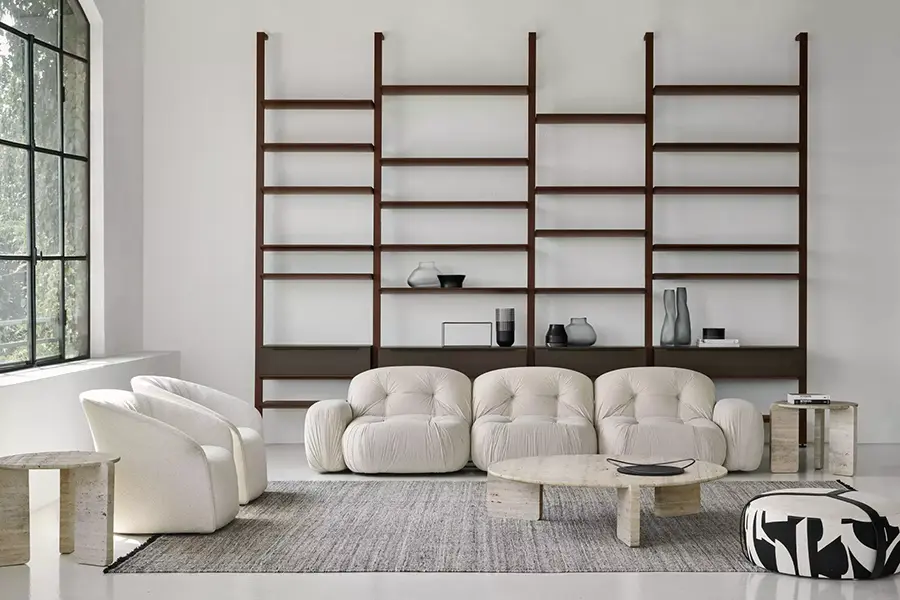
Difference #04: Quality
In the world of luxury furniture, quality isn’t a feature; it’s an art form meticulously created to elevate your living space. From the handpicked, rare materials that form the essence of each piece to the artisanal craftsmanship that breathes life into it, luxury brands’ commitment to excellence transcends the ordinary. It’s not just about possessing furniture; it’s about possessing a masterpiece—a timeless testament to the fusion of art and craftsmanship.
Starting from choosing raw materials and ending at the final touches, every step of the way focuses on quality. This extends beyond the product to the overall service, too. In fact, consistency is a hallmark of designer furniture brands: meeting deadlines and delivering craftsmanship.
In contrast, regular furniture is made from standard materials that are widely available. These may not be high-quality, especially considering these pieces aim to be light on the pocket.
During your store visit, you can determine the difference between luxury and regular furniture by examining material samples. High-end showrooms have a variety of samples; take your time to feel them and observe their quality. Staff might also elucidate the origin and characteristics of each material, emphasizing the premium quality. Additionally, you will be able to notice intricate hand-carved details on legs or arms, showcasing the craftsmanship involved in creating a masterpiece. On the other hand, at a regular furniture showroom, the samples will be limited, and the focus will be on affordability (instead of exquisiteness in materials).
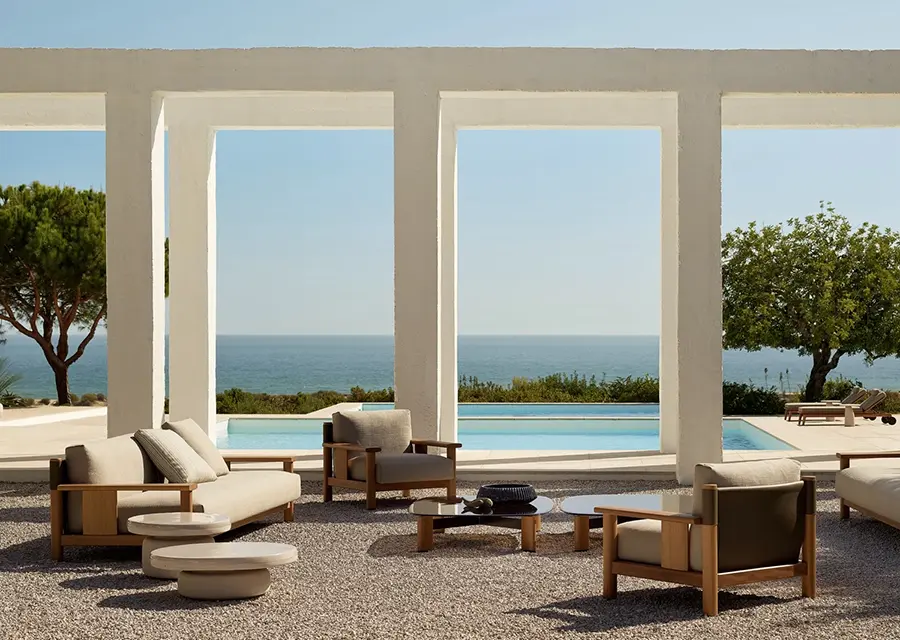
Difference #05: Furniture Designers
Imagine a chair designed by a renowned architect or a collection curated by a world-famous designer. Luxury brands often collaborate with design icons, infusing their creations with a level of prestige and artistry.
At the heart of high end furniture lies the expertise of skilled Italian designers: individuals who innovate the new furniture models. Their designs draw inspiration from cultural nuances and historical contexts, ensuring each piece is a timeless work of art—and the heritage ensures that each piece is truly timeless.
On the other hand, regular furniture is usually made by designers who work within design conventions. They prioritize practicality over innovation in their pieces.
When at the furniture market, look for designs that transcend the ordinary. Luxury furniture pieces will have artistic elements and intricate details, while regular furniture will adhere to conventions. You can also inquire about the heritage and experience of the furniture designers; recognizable names signify a commitment to artistic excellence.

Difference #06: Craftsmen
While designers conceptualize and innovate, the craftsmen form the backbone of furniture creation. These are individuals who manufacture the furniture—and have inherited their craft through generations!
Craftsmen in luxury brands are often masters of specific techniques, such as marquetry or gilding. Their creations involve hours of meticulous handwork, resulting in pieces that are not just furniture but true works of art. Moreover, luxury furniture brands invest in training and mentorship programs—attracting as well as retaining craftsmen.
On the other hand, craftsmen of regular furniture prioritize streamlined production processes and cost-efficiency—and aim to deliver to a broader audience. Their pieces lack the intricate detailing found in luxury pieces.
At the marketplace, differentiate by inspecting the details of furniture making.Luxury pieces often showcase hand-applied finishes, intricate joinery, and flawless detailing that surpass the more straightforward techniques used in regular furniture.

Final Thoughts
Buying luxury furniture isn’t just about buying a piece—it’s about creating an experience tailored exclusively for you! These timeless pieces are made with attention to detail, and the final piece you add to your home will compete globally. (You can tell the competitive advantage they get!). With this investment, you’ll get pieces that age like fine craftmanship ?

